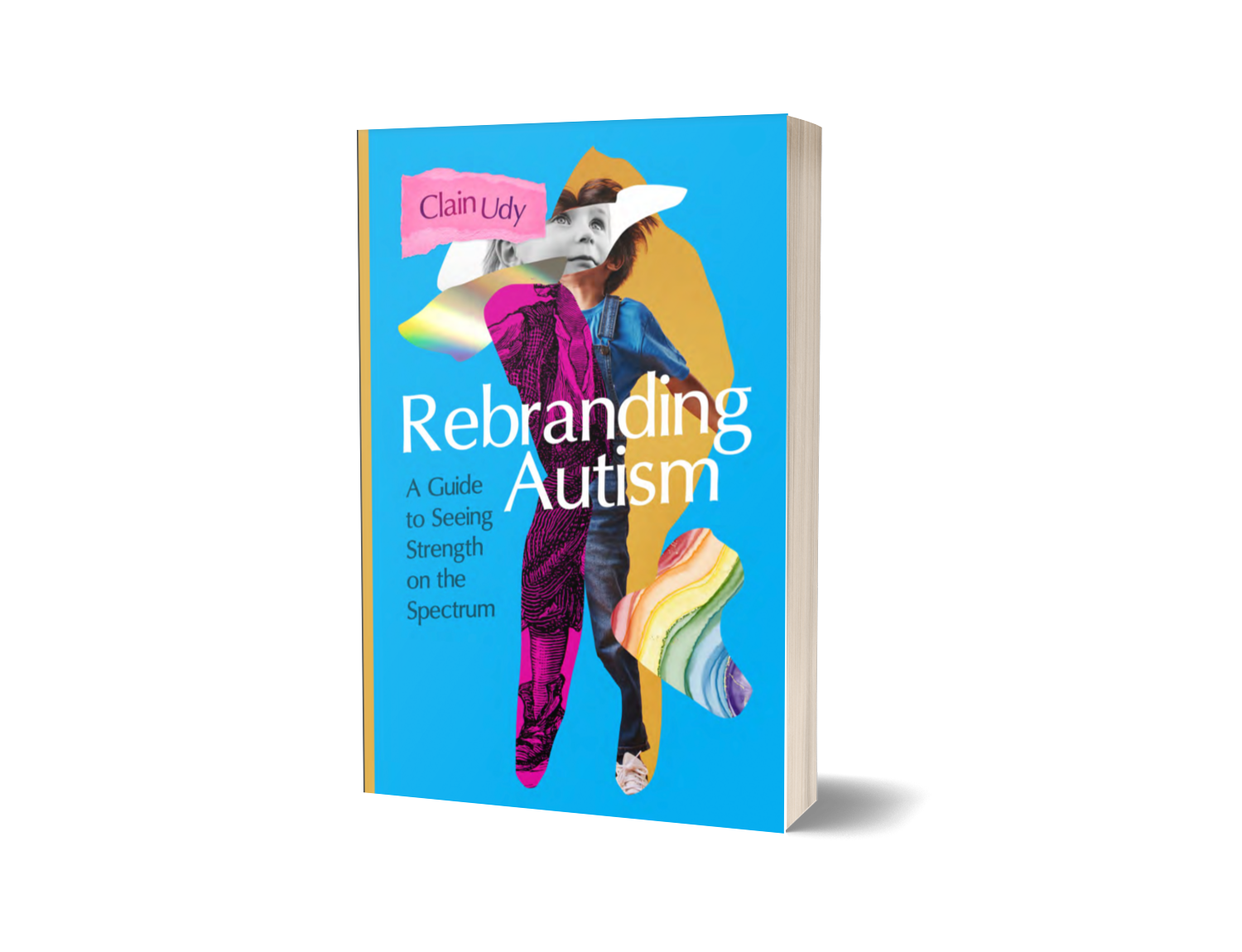REBRANDING AUTISM
A Guide to Seeing Strength on the Spectrum
Rebranding Autism by Clain Udy shatters stereotypes, unveiling autism’s strengths, igniting transformative advocacy, and empowering a strengths-driven reimagination of neurodivergent potential.


Breaking traditions:
Rebranding Autism by Clain Udy is one of the most impactful, hopeful, and truly transformative books I’ve ever read on the subject of autism and careers. As someone who works closely with autistic individuals and their families, I cannot overstate how important this book is.
Patty L. / April 6, 2025
Drawing from his experiences as a parent of an autistic child, Udy challenges readers to shift from a deficit-focused perspective to one that sees autism through a refreshing and compelling strengths-based lens.
This insightful guide is both a memoir and a practical guide, aiming to dismantle the current assumptions and mindset around autism, and empower parents, educators, and employers to recognize and nurture the inherent abilities of autistic individuals.
Through personal stories, actionable advice, and an advocacy-driven approach, Rebranding Autism provides readers with a fresh roadmap for supporting neurodivergent individuals as they reimagine their own identities and reshape what it means to live with autism in today’s world.

My purpose in writing rebranding autism

When our son was diagnosed with autism at four, we began a journey to help him thrive. By the time he was twelve, a pivotal transformation occurred when we shifted our focus from challenges to strengths. This change drove a new sense of his potential and set him on a trajectory, leading to where he is today—a college senior studying mechanical engineering and preparing for a bright future.

As our son entered his teens, we became deeply concerned about the daunting employment challenges autistic individuals face. Determined to ensure his success, I combined extensive research with my professional expertise in learning and development to design the First Ascent program. This initiative addressed critical barriers to employment and empowered autistic young adults to transition into fulfilling careers. Though the program was paused due to the demands of my full-time job and my son’s flourishing progress, its impact stayed with me.

Now, as I return to this calling, I’ve realized a greater mission. Writing Rebranding Autism has solidified my commitment to building a movement that redefines autism, beginning in the home and radiating outward. Through the book and Autism Elevated, I aim to inspire families, educators, and employers to see autism through a strengths-based lens, creating a world where autistic individuals are celebrated for their extraordinary talents and unique potential.
Key takeaways
- In life, you find what you’re looking for; if you look for weakness, you’ll find it (and grow it); if you look for strength, you’ll find it (and grow it). Look for strength.
- Many aspects of the world are not designed for autistic people. It is on us to design a life (built around strengths) in which our autistic children can thrive.

- Many of the default assumptions we make and methods we use in parenting our autistic children are detrimental to building a strength foundation, and by extension a strength identity
- While medical understanding of autism has progressed, the language of deficit, dysfunction, and disorder has framed public perception of autism; a strengths-based language is needed to reframe how people view autism

- Autistic people have driven many of the innovations throughout human history and they represent a unique and compelling opportunity in today’s workforce, but this opportunity remains unseen and unrealized.
- “Innovation and advancement lives in the margins – therefore in the extraordinary – not in the normal.” Rebranding Autism: A Guide to Seeing Strength on the Spectrum

